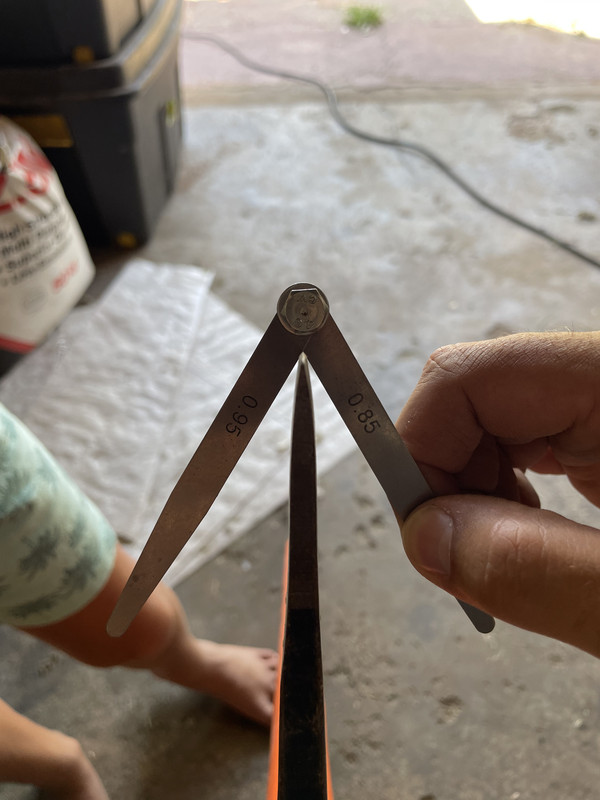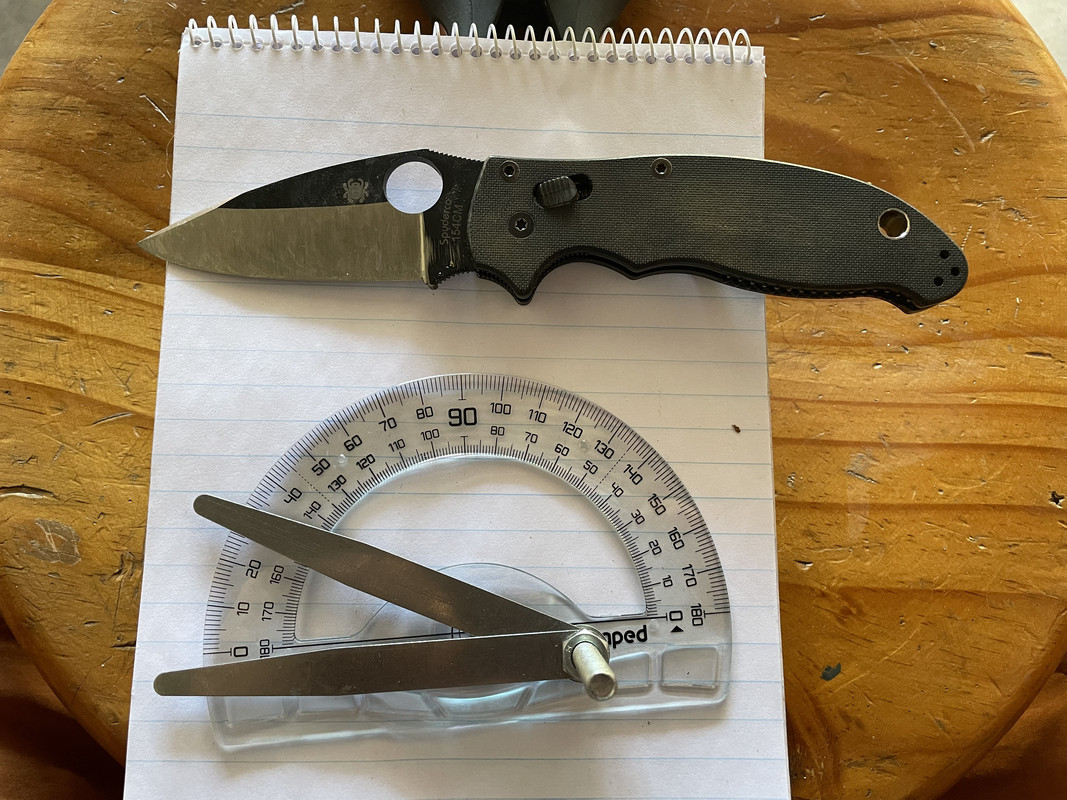Lenny
Gold Member
- Joined
- Oct 15, 1998
- Messages
- 2,454
I did something slightly stupid with my Sebenza.
I wanted to put a lower edge angle on it with my Edge Pro.
I set the angle at about 19 degrees (indicated on the vertical rod that the sharpening stone rod attaches to)
I proceded to sharpen to a mirror edge.
Unfortunately, I laid the whole edge of the knife on the sharpening table (instead of just the flat surface) so I have
no idea what the actual edge angle is.
It was however, low enough to remove a tiny bit of the thumb stud. (DOH!!!)
Anyway, it's back at CRK for a new thumb stud.
BTW, the edge is stupid sharp and has a beautiful polish on it.
Should be a piece of cake to touch it up on the 40 degree position of my Spyderco Sharpmaker now.
Anyway, could somebody please explain to me, in simple terms, how to determine the actual edge angle?
Thank you.
I wanted to put a lower edge angle on it with my Edge Pro.
I set the angle at about 19 degrees (indicated on the vertical rod that the sharpening stone rod attaches to)
I proceded to sharpen to a mirror edge.
Unfortunately, I laid the whole edge of the knife on the sharpening table (instead of just the flat surface) so I have
no idea what the actual edge angle is.
It was however, low enough to remove a tiny bit of the thumb stud. (DOH!!!)
Anyway, it's back at CRK for a new thumb stud.
BTW, the edge is stupid sharp and has a beautiful polish on it.
Should be a piece of cake to touch it up on the 40 degree position of my Spyderco Sharpmaker now.
Anyway, could somebody please explain to me, in simple terms, how to determine the actual edge angle?
Thank you.





